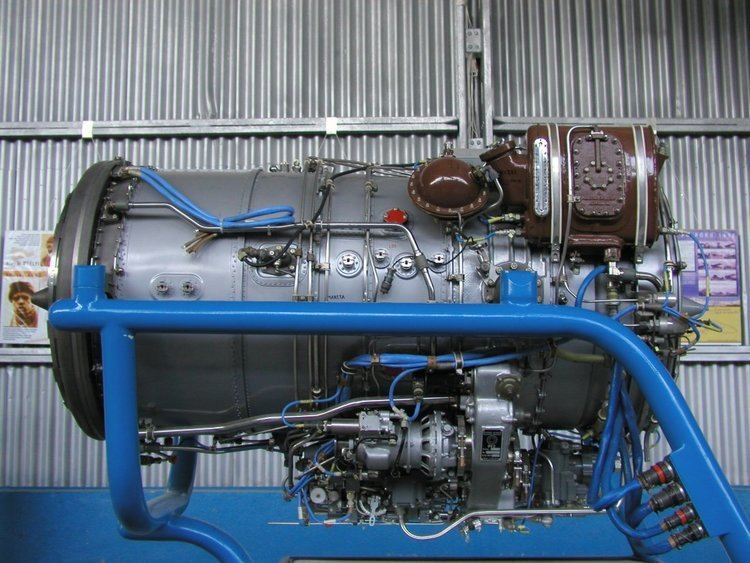 | ||
The Lotarev DV-2 (or PSLM DV-2, DV: Dnepr-Váh) is a two-spool turbofan engine manufactured in Považská Bystrica, Slovakia by Považské Strojárne Letecké Motory (PSLM) (former ZVL) and designed in partnership with Ivchenko Lotarev Design Bureau.
Contents
Design and development
Developed from the Ivchenko AI-25 turbofan engine, ZVL was also responsible for pre-production and serial engine production.
The DV-2 is a two-spool modular aviation turbofan engine with a single-stage overhung fan, two-stage LP compressor, seven-stage HP compressor, single-stage HP turbine, and two-stage LP turbine, and an annular combustion system. Maximum power at T-O is 21.58 kN (4,850 lbf) with a specific fuel consumption of 60 kg/(kN h) (0.593 (lb/lbf h)), at Maximum Rating, Sea Level Static, ISA.
One of the most unusual features of this military engine is the single stage fan; most trainer and combat engines have multi-staged fans, single stage fans normally being the preserve of civil and military transport turbofans. Ivchenko Lotarev chose a very low specific thrust (net thrust/airflow) cycle for the DV-2, so a single stage fan is sufficient to develop the desired fan pressure ratio. Even so, the pressure ratio produced is somewhat higher than that normally developed by a single stage fan. Owing to the low specific thrust, the bypass ratio for the engine is higher than normal for a military turbofan.
This engine was required to power new versions of the L-39 trainer, L-39MS and L-59. Other turbofan engine models in the DV-2 family include the DV-2A, DV‑2A.2 and DV-2S.
The DV-2S was renamed "RD-35" by the Klimov under license agreement with the PSLM in 1993.
Applications
Specifications (DV-2S)
Data from PSLM website
